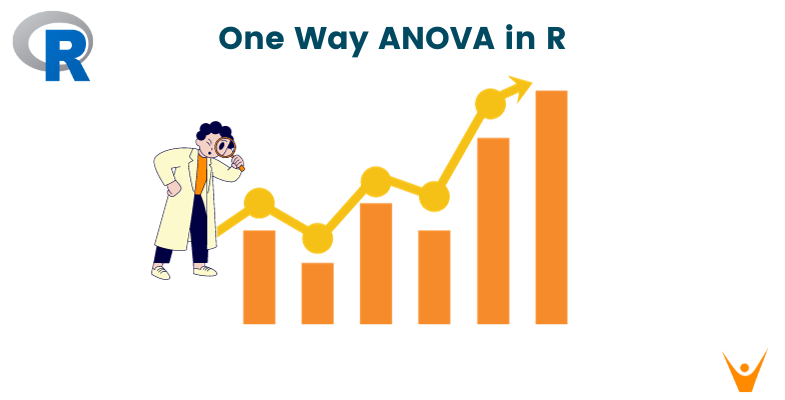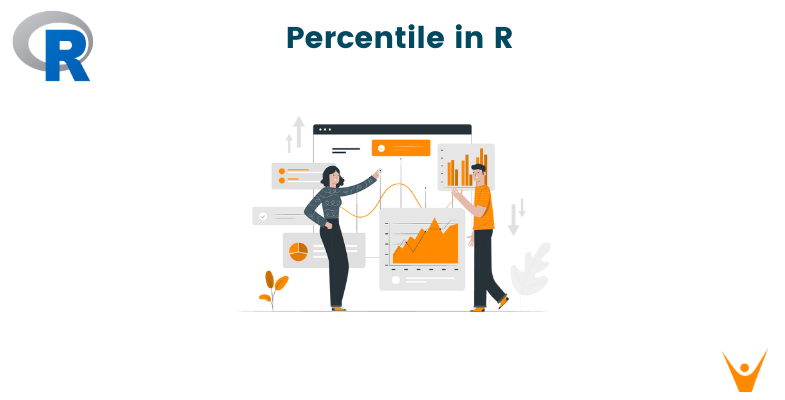Analysis of Variance, or ANOVA, is a statistical method used to assess mean differences among various groups for the detection of statistically significant distinctions. Within this piece, we will explore the One-Way ANOVA concept in R, offering thorough elucidations, detailed procedures, and practical instances to assist in comprehending this potent statistical technique. Our discussion will encompass subjects like one-way ANOVA assessments, their execution in R, and the analysis of outcomes.
What is One-Way ANOVA?
Analysis of Variance (ANOVA) is a method used to analyze the variation in a dataset and assess whether there are significant differences between the means of multiple groups. It is especially valuable when you have more than two groups to compare, as opposed to a t-test which is used for pairwise comparisons.
One-Way ANOVA is a specific type of ANOVA used when you have one categorical independent variable with more than two levels or groups. It helps answer questions like, "Is there a statistically significant difference in the mean scores of three or more groups?" or "Do different teaching methods have a significant impact on student test scores?"
In R, performing One-Way ANOVA is straightforward, and we'll explore this process in detail.
How to Do One-Way ANOVA in R
Let's dive into the practical aspect of conducting a One-Way ANOVA in R. We'll start with an example dataset and guide you through each step.
1. Load Necessary Packages
First, you need to load the essential packages. In R, the stats package is the go-to for basic statistical functions.
library(stats)
2. Create a Sample Dataset
For this example, let's assume we have a dataset that measures the test scores of students taught using three different teaching methods: A, B, and C. We want to determine if these teaching methods have a significant impact on the test scores.
set.seed(42) teaching_methods <- rep(c("A", "B", "C"), each = 20) test_scores <- c(rnorm(20, mean = 80, sd = 5), rnorm(20, mean = 85, sd = 5), rnorm(20, mean = 90, sd = 5)) data <- data.frame(Method = teaching_methods, Score = test_scores)
3. Perform the One-Way ANOVA
Now, let's conduct the One-Way ANOVA test:
anova_result <- aov(Score ~ Method, data = data)
4. Check the ANOVA Summary
To interpret the results, you can use the summary() function:
summary(anova_result)
The output will provide various statistics, including the F-statistic, p-value, and more. These values are crucial for determining the significance of the differences between the groups.
5. Interpret the Results
The most important part of the One-Way ANOVA output is the p-value. A small p-value (typically less than 0.05) indicates that there are significant differences between at least two of the groups. If the p-value is significant, you can perform post-hoc tests (e.g., Tukey's HSD) to identify which specific groups differ from each other.
Example Output and Interpretation
Let's look at a hypothetical One-Way ANOVA output:
Df Sum Sq Mean Sq F value Pr(>F) Method 2 295.5 147.75 89.34 < 2e-16 *** Residuals 57 112.6 1.98
- Df: Degrees of freedom for Method and Residuals.
- Sum Sq: Sum of squares for Method and Residuals.
- Mean Sq: Mean sum of squares for Method and Residuals.
- F value: The F-statistic, a measure of the variance between groups compared to within groups.
- Pr(>F): The p-value, which indicates the significance of the differences between groups.
In this example, the p-value is less than 0.05, indicating that there are significant differences in test scores between the teaching methods.
One-Way ANOVA in R: Key Takeaways
- ANOVA is a statistical technique used to compare means between multiple groups.
- One-Way ANOVA is applied when you have one categorical independent variable with more than two levels.
- In R, you can conduct a One-Way ANOVA using the
aov()function. - Interpret the results by examining the p-value, which determines the significance of group differences.
Now that you have a good understanding of One-Way ANOVA in R, you can apply this powerful tool to various real-world scenarios for data analysis.
Conclusion
One-Way ANOVA in R is an essential statistical method for comparing means among multiple groups. By conducting a One-Way ANOVA and interpreting the results, you can determine whether significant differences exist between the groups you are studying. This information is invaluable in various fields, including education, healthcare, and market research, where group comparisons play a crucial role in decision-making.








